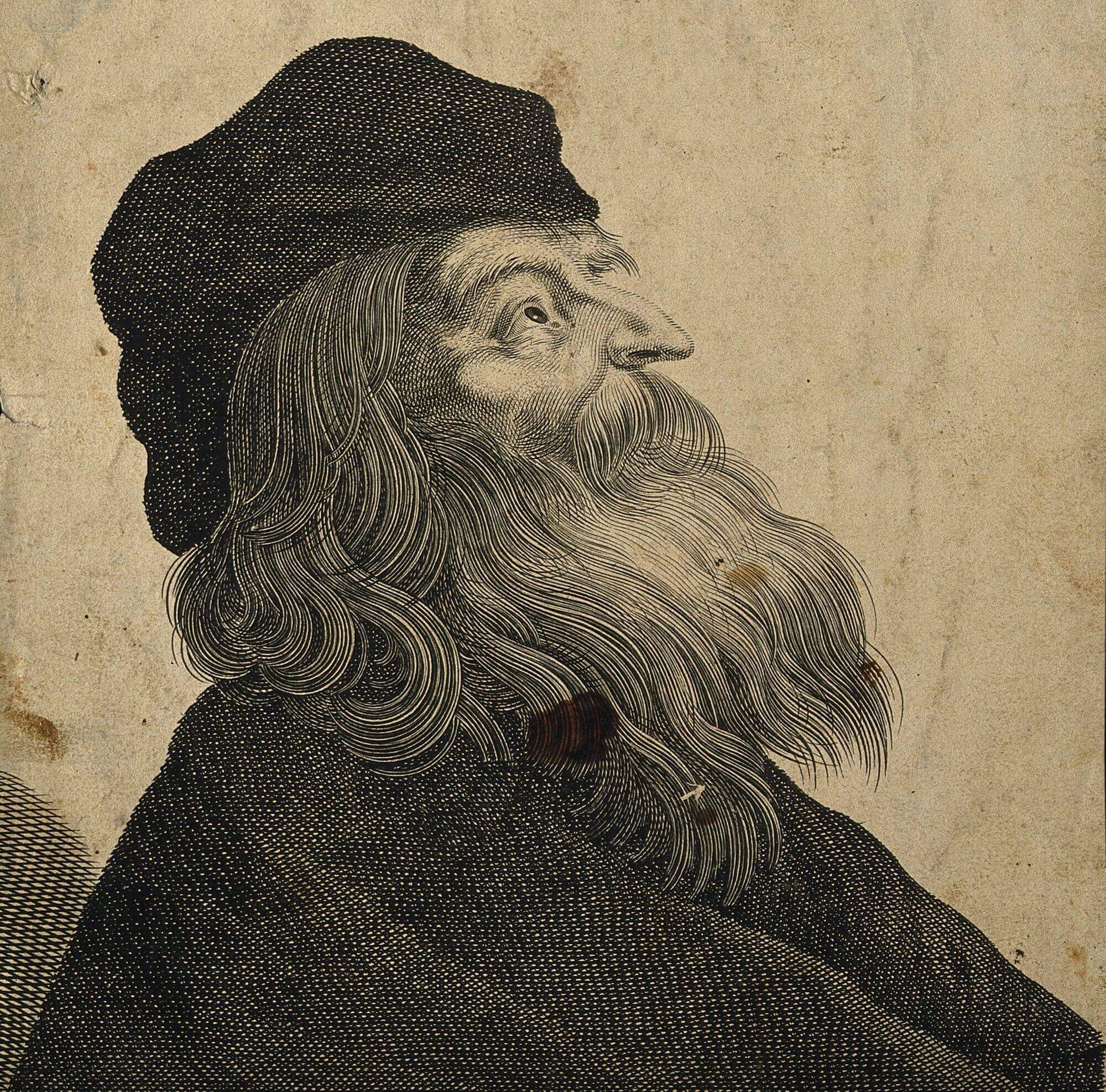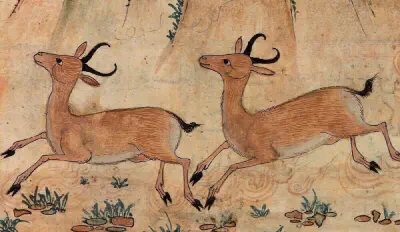Life
Empedocles was a philosopher from the city of Akragas in Sicily. His traditional dates are around c. 494 BCE to c. 434 BCE, although these are uncertain. He came from a family of aristocrats, and his grandfather, also called Empedocles, was allegedly a skilled horseman who won the crown for his riding skills at the Olympic Games.
The dandyish shaman
Some have argued that Empedocles studied with philosophers such as Xenophanes and Anaximander, although this is largely speculation. There is some evidence that he was influenced by Parmenides and by the Pythagorean school. Despite his aristocratic origins, some early accounts paint him as a defender of ordinary people against the iniquities imposed upon them by the rich.
But in the tradition, Empedocles does not fit with the image of a sober-minded philosopher. Instead, he seems to have been more like a wandering healer, poet, medicine-man and shaman. Tradition also holds that he was a snappy dresser, who liked to wear bronze sandals and a laurel wreath. And if this seems like an affectation, it is in keeping with stories that Empedocles styled himself as a living god. Here is how Empedocles describes himself in the story told by the chronically unreliable Diogenes Laërtius:
I, in your eyes a deathless god, no longer mortal,go among all, honoured, just as I seem:wreathed with ribbons and festive garlands.As soon as I arrive in flourishing cities I am reveredby all, men and women. And they follow at once,in their ten thousands, asking where is the path to gain, some in need of divinations, others in all sorts of diseases sought to hear a healing oracle…The Poem of Empedocles, Trans. Brad Inwood, p. 81
Into the furnace
Empedocles’ god delusions may, according to one famous story, have eventually got the better of him. According to the legend, Empedocles threw himself into the mouth of Mount Etna in an attempt to prove his immortality. The legend says that the volcano happily swallowed the philosopher whole, but it spat out one of his fancy bronze sandals.
The story is entertaining, and has had a long history; but there is, alas, no evidence any of it is true.
Philosophy
Like several other early Greek philosophers, including Parmenides and Xenophanes, Empedocles wrote his philosophy in verse. In the later philosophical tradition, Plato made a stark distinction between poetry and philosophy; but for many early Greek philosophers, the two went hand-in-hand.
And as with many other early Greek philosophers, Empedocles was obsessed by the question of how to account for both regularity and change.
The four roots
Empedocles argued that all existing things have four ‘roots’: fire, air, water and earth. He argued that these corresponded to the gods Zeus, Hera, Nestis (or Persephone) and Aidoneus:
First, hear of the four roots of all things,gleaming Zeus and life-bringing Hera and Aidoneusand Nestis, who moistens with tears the spring of mortals.The Poem of Empedocles, Trans. Brad Inwood, p. 218
The fact that Empedocles associates these four ‘roots’ with gods suggests he’s talking about something a bit more intangible than material elements. But whatever these four ‘roots’ are, for Empedocles, they are the unchanging source of everything that changes and grows and decays in the world. So underneath the changing world, there is a constant set of principles. And these fundamental roots are themselves unchanging, neither coming into existence nor being destroyed.
But how does this change happen? The answer that Empedocles gives is that it happens through the interaction of love (philotes) and strife (neikos).
Love, strife and creativity
One way of seeing love and strife is as the forces of attraction and repulsion. The later writer Alexander of Aphrodisias (c. 150 - 215 CE) suggests that Empedocles drew his ideas from the observation of magnetism. If you try to force two north poles of a magnet together (or two south poles) you feel repulsion. If you bring together a north and south pole, you feel attraction.
And it isn’t just magnets. The whole world — from magnets to human interactions — seems to be governed by the interplay of ‘push’ and ‘pull’ forces. So Empedocles argued that the world is underpinned by love and strife. Love is the force that unites things, that brings them together. Love mixes and blends and combines. Strife is the counter-force that separates things out. What is crucial for Empedocles is that both love and strife are important for the creative processes of the universe. Creativity consists both in the process of separation, and in the process of unification.
As the philosopher Brad Inwood writes, ‘all creative activity… requires a delicate balance of love and strife.’ If strife won out, everything would revert to the four roots, and nothing much would happen. If love won out, everything would mix together into one single lump, and there could be no change or growth.
And these things never cease from constantly alternating,at one time all coming together by love into one,and at another time again all being borne apart separately by the hostility of strife.The Poem of Empedocles, Trans. Brad Inwood, p. 225
Further Reading
Books
The poem of Empedocles: a text and translation with an introduction by Brad Inwood (University of Toronto Press 2001) is an excellent, accessible translation, with lots of supporting material, and the original Greek text.
Online Resources
This essay on Empedocles gives more background on love, strife and the four ‘roots’, using some metaphors drawn from jazz.
Also, try this episode on Empedocles from The History of Philosophy Without Any Gaps.



